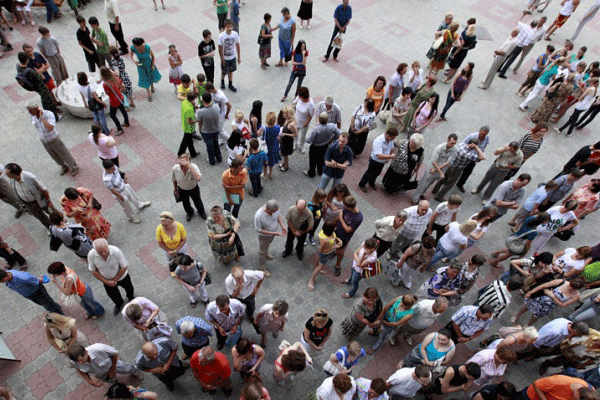
Ethnic Russians Leaving Central Asia and With Them, Putin’s Hopes for Influence
Publication: Eurasia Daily Monitor Volume: 13 Issue: 22
By:

Because Vladimir Putin has made the presence of ethnic Russians in other countries so central to his efforts to expand Moscow’s influence, their departure from any region or country means far more now than it did a decade ago. Nowhere has their exit been more massive—and, consequently, the influence of ethnic Russians on local governments more reduced—than in Central Asia, where they are now half as numerous as they were a generation ago. And because the titular nationalities there have been growing rapidly, the share of ethnic Russians in the population of these five countries has fallen even more.
The number of ethnic Russians in the five countries of Central Asia has fallen by 50 percent since 1991, Aleksandr Shustov, a specialist on the region says. Three-quarters of Central Asia’s remaining 4.7–4.8 million ethnic Russians live in Kazakhstan, where they still have some influence. But he argues that “Tajikistan and Turkmenistan have de facto already left Russia’s sphere of cultural-civilizational influence, and Uzbekistan and Kyrgyzstan are confidently moving in the very same direction” (Ng.ru, February 1).
The fall in the number of Russians and of the use of the Russian language, education and culture, he continues, “will have far-reaching political consequences.” It is “not accidental,” that only Kazakhstan and Kyrgyzstan have joined the Eurasian Economic Union and that the other three Central Asian countries have shown little interest in doing so.
“To return all these countries of the region to that level of the spread of the Russian language that existed in the later period of the USSR [Union of Soviet Socialist Republics] is, today, already unrealistic.” Russia simply does not have the resources for this, and any effort to promote “mass russification” would be opposed by the governments there. Consequently, the Moscow expert argues, the Russian government should concentrate its efforts on Kazakhstan and Kyrgyzstan, where small efforts may have real results, and not become involved elsewhere, where no currently conceivable efforts would be likely to lead to the desired outcome (Ng.ru, February 1).
To make his case, Shustov examines the situation in each of the five countries. In Kazakhstan, there are currently about 3.7 million Russians—approximately 21 percent of that country’s population. Most live in the northern or eastern regions, where they form 49.9 percent and 37.6 percent, respectively. Because of these concentrations, many in Astana fear a Crimea or Donbas scenario (see EDM, February 27, 2014; October 21, 2014; December 16, 2014). But even there, that seems far-fetched, Shustov suggests.
Most of the decline in the number of ethnic Russians is the result of emigration, because it is now the case that the number of births among them in Kazakhstan is nearly equal to the number of deaths. Last year, 17,500 ethnic Russians left Kazakhstan, far fewer than in the first years after 1991, but enough so that the Russian demographic decline continues even in Kazakhstan.
According to Shustov, the exodus of ethnic Russians, especially the young and educated, is not in Kazakhstan’s interest. Consequently, while many ethnic Russians there feel isolated and marginalized, the Kazakhstani government has sought to retain as many ethnic-Russian specialists as possible. If it fails to do so, Shustov says, “it could create major cadre problems for the republic.”
The situation in Kyrgyzstan regarding ethnic Russians is even more negative. Between 2009 and 2015, the number of ethnic Russians fell from 419,600 to 364,600, largely the result of domestic instability rather than, as is the case with the ethnic Russians of Kazakhstan, economic opportunities in Russia. Consequently, this trend is likely to continue as long as Kyrgyzstan remains unstable. Nonetheless, Shustov says, there are still enough ethnic Russians in Kyrgyzstan to constitute the basis of Moscow’s “soft power” there.
The situation in the other three countries of the region is worse, although it is hard to document because none of them have conducted or released the kind of census materials needed to do so, Shustov says. Uzbekistan, for example, is the only Central Asian country that has not conducted a single census since the end of the USSR. Shustov estimates that there are now only about 500,000 ethnic Russians there.
Turkmenistan conducted a census in 2012, but has not released the results. In 2008, Moscow estimated the number of ethnic Russians in this isolated republic at 100,000; but it is certainly smaller than that now, especially after Ashgabat started to persecute people who had taken dual citizenship. And in Tajikistan, there are now “no more than 15,000 to 20,000” ethnic Russians, with “the majority of them being pensioners who are in extremely bad situations and cannot, for this reason, leave for Russia.” If nothing changes, their numbers will continue to drop, and “in the next 15 to 20 years, the Russian community of the republic will be at risk of disappearing completely.”
Moscow may retain military, economic and political influence in this region, Shustov says; but it lacks “the ethnic-Russian base” it needs for the expansion of “the Russian world” there. Indeed, over time, that base seems fated to become ever smaller, and hence Moscow’s prospects for “soft power” in Central Asian will become ever smaller as well.




